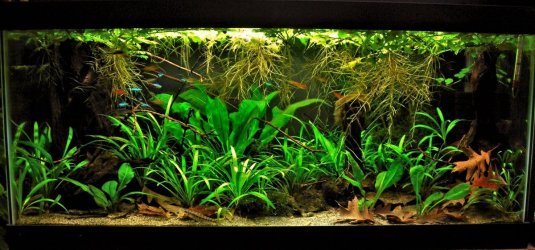Filter manufacturers rate the filter's gallons per hour (GPH) with no media. But who runs a filter with no media? I have a canister rated for 525gph, but with media, it's more like 100gph at best!
Hobbyists have become convinced that we need 4x to 10x GPH flow relative to tank size...and many believe "there's no such thing as too much filtration".
But good filtration is really about how well we filter water, not how much or how fast we push water through media. Besides, filters don't clean water, they merely make it look clearer. In fact, many filters become nitrate factories as the trapped waste decomposes and pollutes the water.
Disclaimer: Filters CAN improve water quality if/when they contain chemical media that adsorbs impurities. But these need to be reclaimed or replaced routinely to remain effective. It is most often more practical ($$) to rely on periodic routine partial water changes to better ensure ongoing water quality/purity.
Many hobbyists obsess over mulm (along with algae and snails)! They'll have over powered filters, add filters, or power heads for more circulation to increase filtration.
As I've written in other posts, not long ago on a FB fish forum, a member proudly displayed his 55g tank with three (3) large canister filters underneath! (ONE would have been more than enough). Water clarity is not necessarily a good measure of water quality! Many with large canister filters don't service them for months when it would be much better to routinely get the crud out of the system.
As to flow rates and fish, many think they may need to simulate a river because a given species in the wild is most often found in fast moving streams. However, although there are exceptions, many of the fish we see in the hobby are born and grown out in tanks or ponds and never lived in fast moving waters like their wild cousins. Besides, rivers and streams have eddies, depressions, rocks, and boulders where fish can rest. So having an oversize filter, or adding a filter or powerhead for more flow isn't really a good simulation anyway.
Yes we want decent circulation in a tank as it better distributes nutrients, eliminates thermal gradients, and creates a more uniform temperature. But it doesn't need to be a raging torrent.
For a time I ran a bubble bar on one side of my 60g, As much of a decoration as a gas equalizer. From time to time, I would see fish swimming up and down like crazy in the flow of the bubble stream. But what kid doesn't like a roller coaster ride.




